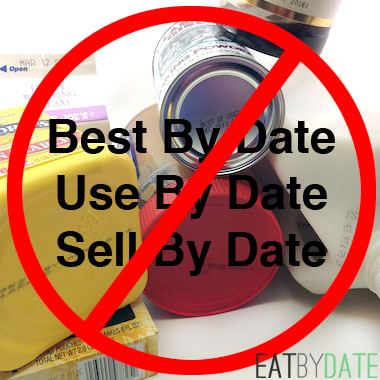Do Food Expiration Dates Really Matter?
Experts provide a guide to the variety of confusing ‘freshness’ dates on food.

You open the fridge, drag out the cottage cheese, check for fur, and if there isn’t any, you say, “Honey? Will you sniff this?” This is not, however, the approved method of checking for freshness. The approved way lies in a voluntary system of labeling.
Yes, voluntary. The only items required by federal law to be labeled for expiration are infant formula and some baby foods; some states also mandate pulling dairy from store shelves on the expiration date.
Learn the Lingo of Expiration Dates
This brings us to terminology. The actual term “Expiration Date” refers to the last date a food should be eaten or used. Last means last — proceed at your own risk.
Other, more commonly spotted terms are:
- “Sell by” date. The labeling “sell by” tells the store how long to display the product for sale. You should buy the product before the date expires. This is basically a guide for the retailer, so the store knows when to pull the item. This is not mandatory, so reach in back and get the freshest. The issue is quality of the item (freshness, taste, and consistency) rather than whether it is on the verge of spoiling. Paul VanLandingham, EdD, a senior faculty member at the Center for Food and Beverage Management of Johnson & Wales University in Providence, R.I., tells WebMD the “sell by” date is the last day the item is at its highest level of quality, but it will still be edible for some time after.
- “Best if used by (or before)” date. This refers strictly to quality, not safety. This date is recommended for best flavor or quality. It is not a purchase or safety date. Sour cream, for instance, is already sour, but can have a zippier, fresh taste when freshly sour (if that’s not an oxymoron!)
- “Born on” date. This is the date of manufacture and has been resurrected recently to date beer. Beer can go sub-par after three months. “It is affected by sun,” VanLandingham says. The light can reactivate microorganisms in the beer. That’s why you have to be especially careful with beer in clear bottles, as opposed to brown or green.
- “Guaranteed fresh” date. This usually refers to bakery items. They will still be edible after the date, but will not be at peak freshness.
- “Use by” date. This is the last date recommended for the use of the product while at peak quality. The date has been determined by the manufacturer of the product.
- “Pack” date. You will find this one on canned or packaged goods, as a rule, but it’s tricky. In fact, it may be in code. It can be month-day-year-MMDDYY. Or the manufacturer could revert to the Julian calendar. January would then be 001-0031 and December 334-365. It gets even weirder than that.
Leave a Reply
You must be logged in to post a comment.